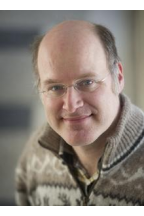Jan Kycia

Biography
Dr. Kycia's group works on the experimental investigation of superconducting and quantum mechanical devices; in particular Superconducting Quantum Interference Devices (SQUIDs) and GaAs quantum dots (Spin Qubits). The experiments are run at ultra low temperatures (down to 0.004K). With these low temperatures, the quantum aspects of devices can be isolated and sensors can have the lowest levels of noise. These devices are used for quantum computing applications as well as for studying novel magnetic and superconducting materials.
Research Interests
Josephson junction-based sensors and devices (SQUIDS, Qubits)
Semiconductor-based single spin-charge devices
Cryogenic electronics and techniques
Quantum Science
Quantum Materials
Scholarly Research
Education
1997, Doctorate Physics, Northwestern University, Illinois, USA
1991, Master of Science Physics, University of Pennsylvania, Pennsylvania, USA
1989, Bachelor of Science (BSc) Physics, McGill University, Montreal, Quebec, Canada
Awards
2007, Ontario Early Research Award for applied superconducting devices
2001, Research Innovation Award for novel Transition Edge Sensor (TES) detector, the Research Corporation
Affiliations and Volunteer Work
Waterloo Institute for Nanotechnology
Associate, Institute for Quantum Computing
Teaching*
- MNS 221 - Physics and the Solid State
- Taught in 2021, 2022
- PHYS 358 - Thermal Physics
- Taught in 2021, 2022, 2023
- PHYS 391 - Electronics
- Taught in 2021, 2022, 2023, 2024, 2025
- PHYS 391L - Electronics Laboratory
- Taught in 2021
- PHYS 769 - Special Topics in quantum Information Processing
- Taught in 2024, 2025
* Only courses taught in the past 5 years are displayed.
Selected/Recent Publications
H. M. Revell, L. R. Yaraskavitch, J. D. Mason, K. A. Ross, H. M. L. Noad, H. A. Dabkowska, B. D. Gaulin, P. Henelius & J. B. Kycia Evidence of impurity and boundary effects on magnetic monopole dynamics in spin ice Nature Physics 85, doi:10.1038/nphys2466 (2012)
D. Pomaranski, and J. B. Kycia Low Temperature Specific Heat Measurements of Frustrated Magnetic Materials Physics in Canada 68, No. 2: 99-102 (2012)
L. R. Yaraskavitch, H. M. Revell, S. Meng, K. A. Ross, H. M. L. Noad, H. A. Dabkowska, B. D. Gaulin, and J. B. Kycia Spin dynamics in the frozen state of the dipolar spin ice material Dy2Ti2O7 Phys. Rev. B 85, Issue 18, 020410(R) (2012)
J. A. Quilliam, S. Meng, C. G. A. Mugford, and J. B. Kycia Evidence of Spin Glass Dynamics in Dilute LiHoxY1-xF4 Phys. Rev. Lett. 101, Issue 18, 187204 (2008)
Please see Google Scholar for a complete list of Dr. Kycia's publications.